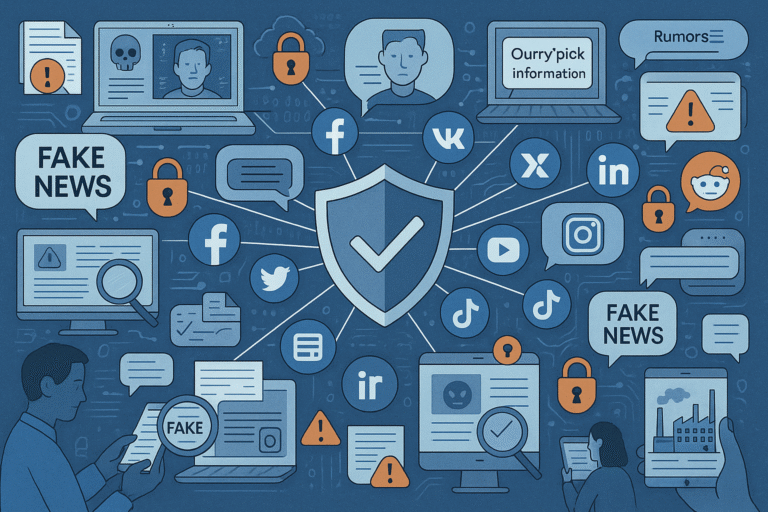A wave of viral posts hit X earlier this month, slamming US tariffs and calling out luxury fashion brands like Lululemon, Chanel, and Gucci for allegedly misleading consumers about where their products are manufactured. But behind the backlash was something far more coordinated than an authentic consumer response.
Cyabra’s latest investigation reveals that more than a third of the accounts driving this narrative were fake, part of a synchronized bot campaign designed to amplify anti-US sentiment, drag global brands into controversy, and distort public perception at scale.
Here’s what Cyabra uncovered.
TL;DR?
- 37% of accounts posting about U.S. tariffs and “Made in China” backlash were fake
- 41% of content from these accounts was negative, pushing anti-US narratives and stoking fears of a global trade war
- Luxury brands like Gucci, Chanel, and Lululemon were targeted, accused of deceptive sourcing practices
- Fake accounts generated nearly 2,000 posts in just six days, flooding the conversation, and gaining 2 million potential views, creating reputational risk for brands caught in the crossfire
A Bot-Led Backlash
Between April 10th and 16th, 2025, Cyabra analyzed thousands of profiles discussing the new US tariffs, including trending hashtags like #TariffWar and #MadeInChina. 37% of the profiles participating in the discussions on X were fake, generating 1,734 coordinated posts and comments in less than a week.
Bot activity peaked on April 14-16, aligned with the viral spread of influencer posts urging users to bypass American pricing and buy directly from Chinese sellers. Cyabra found that fake accounts systematically boosted these narratives to increase their visibility and credibility, hijacking the conversation in the process.
Anti-US Messaging: An Illusion of Outrage
Cyabra’s sentiment analysis revealed that 41% of content from fake profiles was negative, with messaging focused on framing the US as a declining economic power and a hegemonic force in global trade.
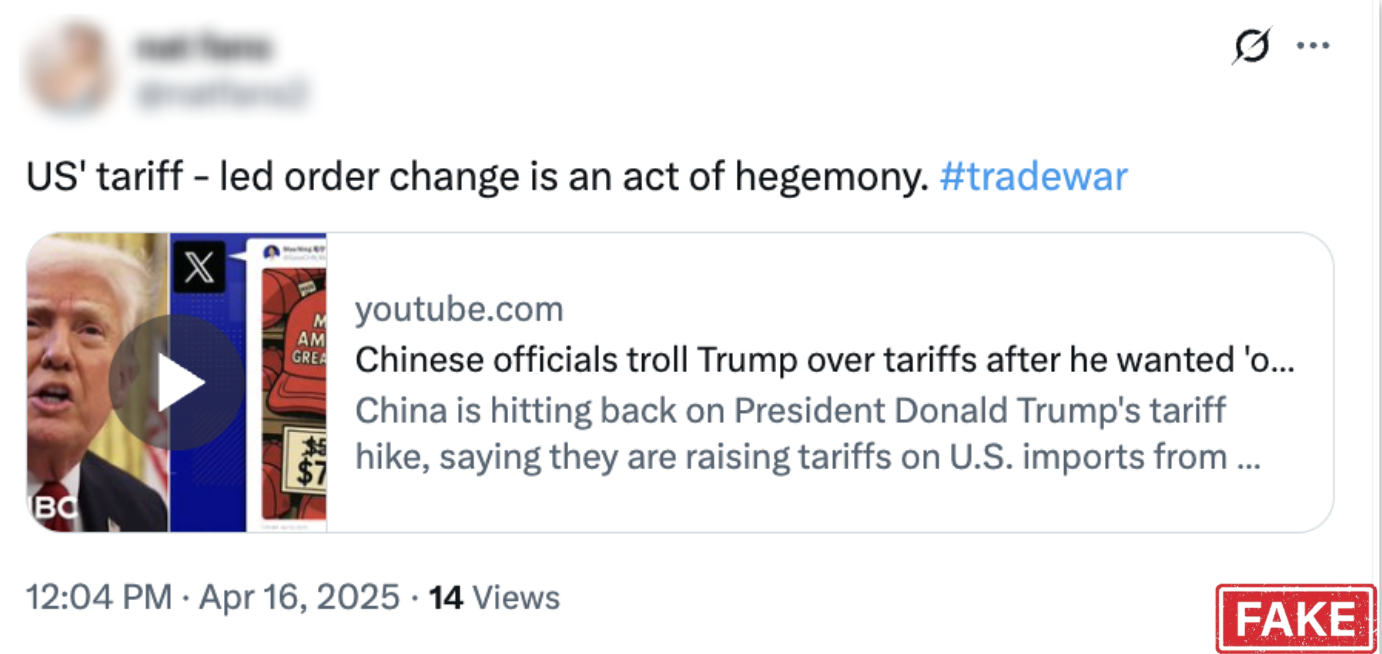
In the picture: A fake account calls the US tariffs an “act of hegemony.”
One recurring narrative compared America to the Titanic, suggesting the country was headed for a financial iceberg due to its protectionist policies. Another widely shared message claimed that Amazon resellers would collapse under the weight of new tariffs, urging users to cut out U.S. retailers altogether. Fake profiles’ content directly attacking the US had a potential reach of 1.4 million views.
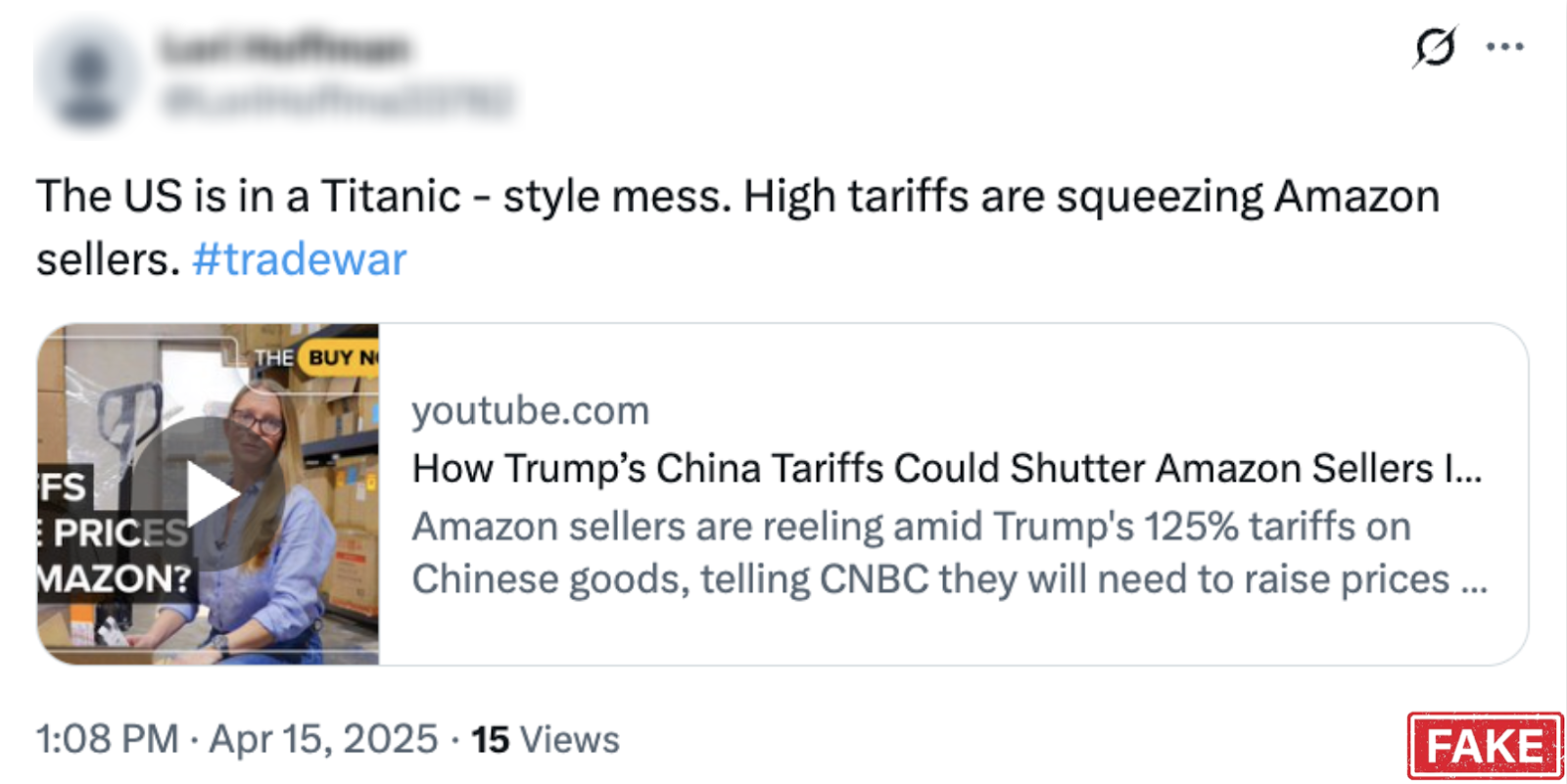
In the picture: Bots compare the U.S. to the Titanic.
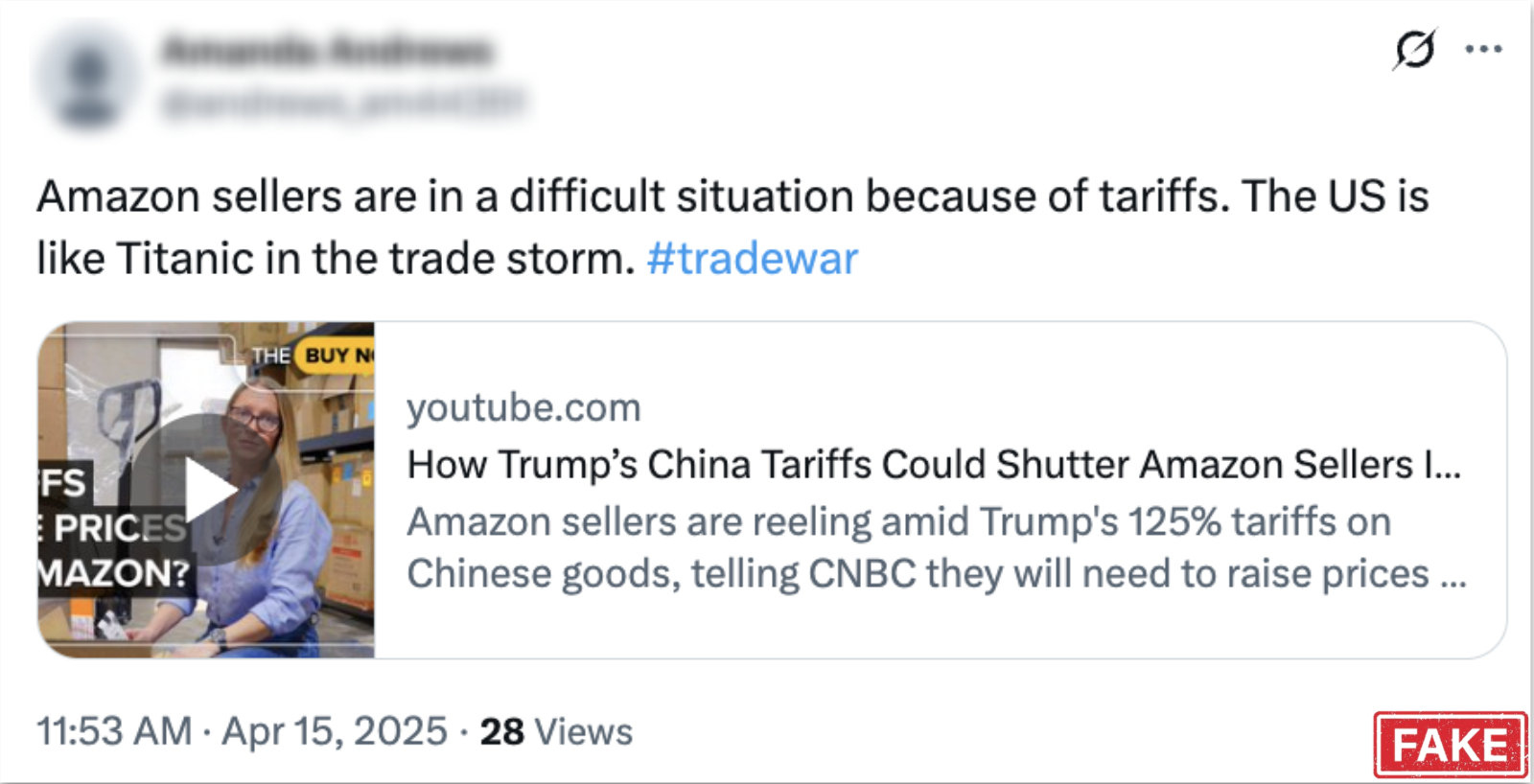
In the picture: A post from a fake account warning that the tariffs are negatively impacting Amazon sellers.
Luxury Brands Pulled Into a Fake Scandal
The campaign didn’t stop at tariff criticism; it escalated into an attack on global luxury brands.
Cyabra found that 28% of accounts discussing brands like Lululemon, Chanel, and Hermès were fake. These accounts pushed two main narratives:
- Deceptive Labeling: Posts accused fashion houses of falsely branding China-manufactured goods as “Made in France” or “Made in Italy,” framing it as consumer fraud enabled by US trade policy.
- Celebrating Chinese Alternatives: Bots expressed support for buying direct from Chinese manufacturers, positioning China as “the same quality for less.”
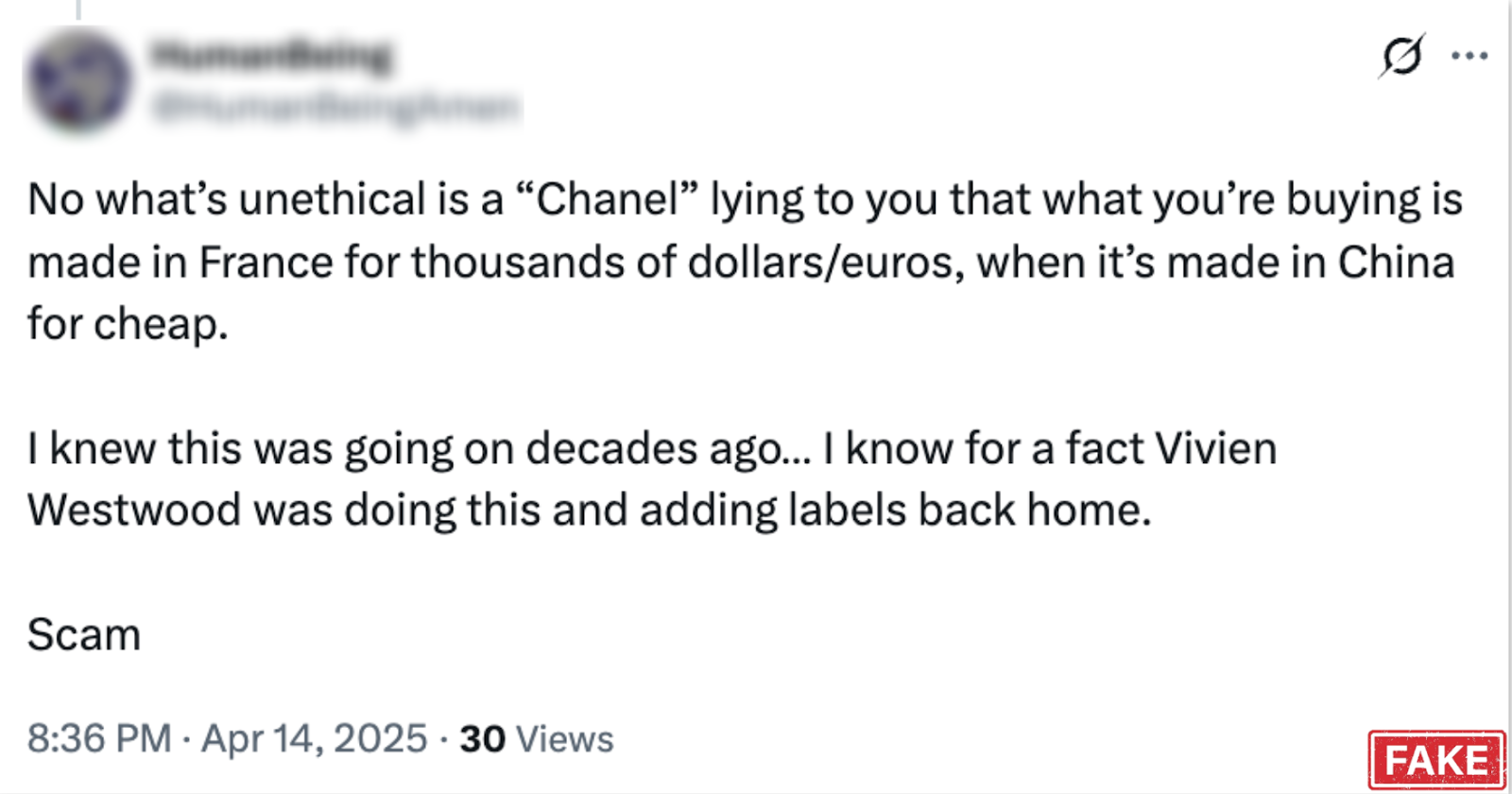
In the picture: A fake account claiming that luxury brands falsely label China-made goods as “made in France.”
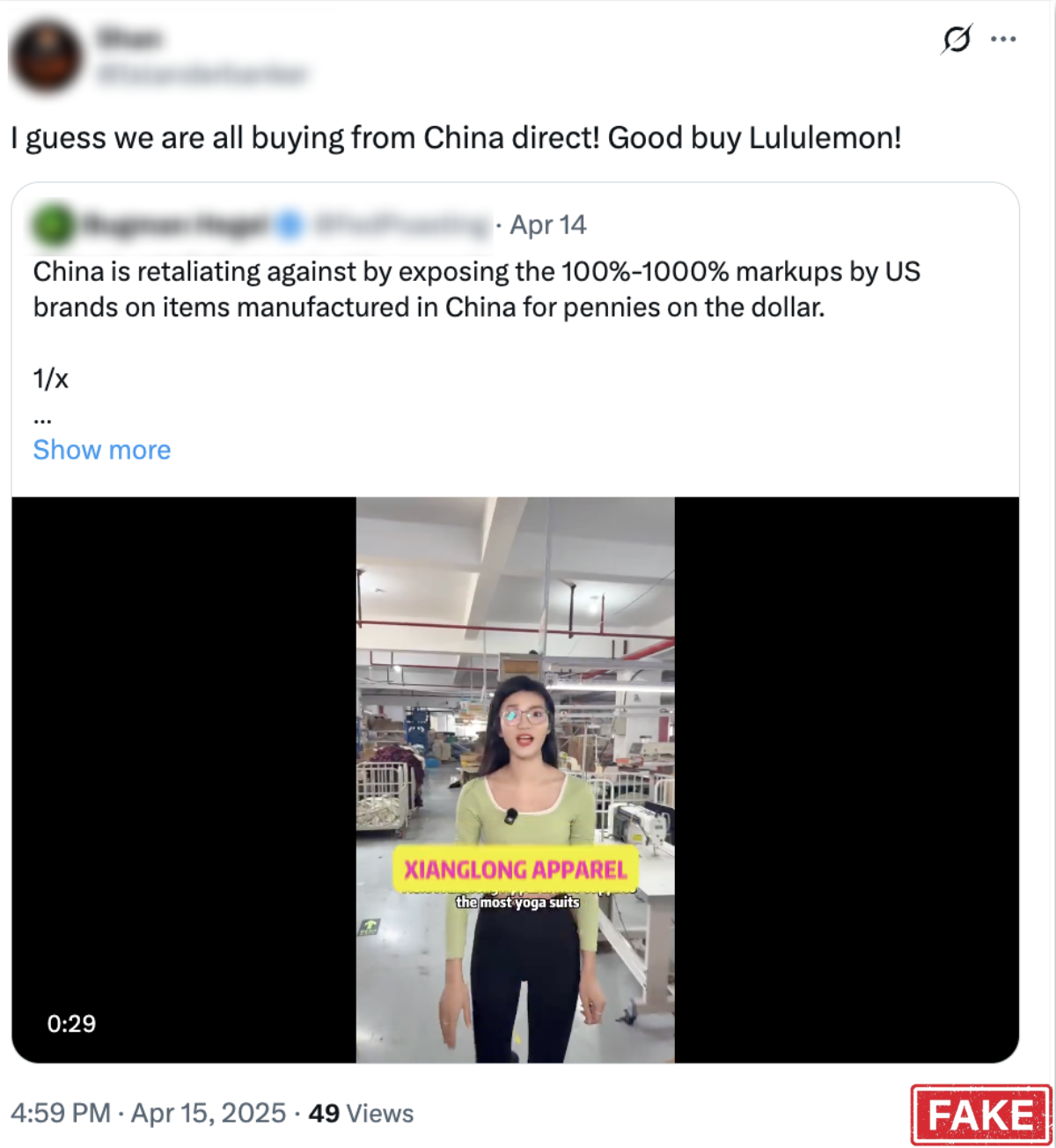
In the picture: A bot supports buying directly from China.
Combined, content from fake profiles within brand-related conversations received thousands of engagements and had a potential reach of 2 million views.
Fake Campaign, Real Repercussions
“Made in China” wasn’t a spontaneous online protest, but a calculated, coordinated campaign designed to manipulate public perception, fuel anti-American narratives, and weaponize outrage against trusted brands.
The tactics used, including identical messaging, synchronized posting, and repeating hashtags, fit a pattern Cyabra has documented in previous fake campaigns:
- Hijack a polarizing issue – in this case, tariffs
- Exploit public frustration – like with pricing and trust in global brands
- Flood the conversation with fake accounts to make the protest appear both grassroots and widespread
The result: a manufactured scandal that damages brand reputation, confuses consumers, and distorts public opinion.
What Happens When Bots Shape the Story
This campaign is just the latest example of how fake accounts can manufacture virality and exacerbate real-world scandals. The US tariff debate was already controversial, but coordinated bot activity took that tension and escalated it, hijacking the conversation and dragging global brands into the spotlight.
Today, the fight for public trust plays out in real time, across trending hashtags, viral posts, and coordinated comment threads. And often, the loudest voices aren’t even human.
Companies caught in the crossfire of digital manipulation must be prepared to respond quickly, strategically, and authentically. That means:
- Monitoring sentiment and conversation patterns in real time to detect emerging risks early.
- Identify who is driving the conversation, whether it’s customers, influencers, or coordinated fake profiles, and understand how their content is spreading.
- Responding with messaging that is timely, credible, and aimed at the authentic audience, while ignoring noise spread by fake profiles.
To learn more about how to protect your brand from coordinated disinformation and manufactured backlash, contact Cyabra.

